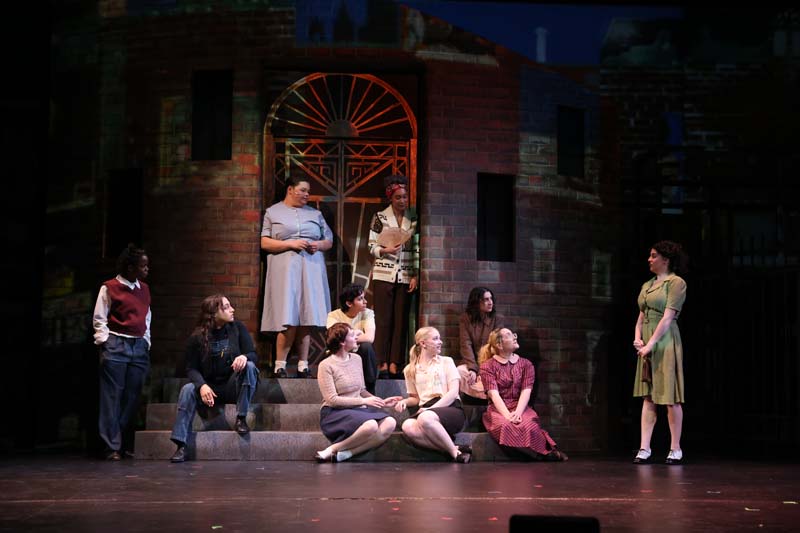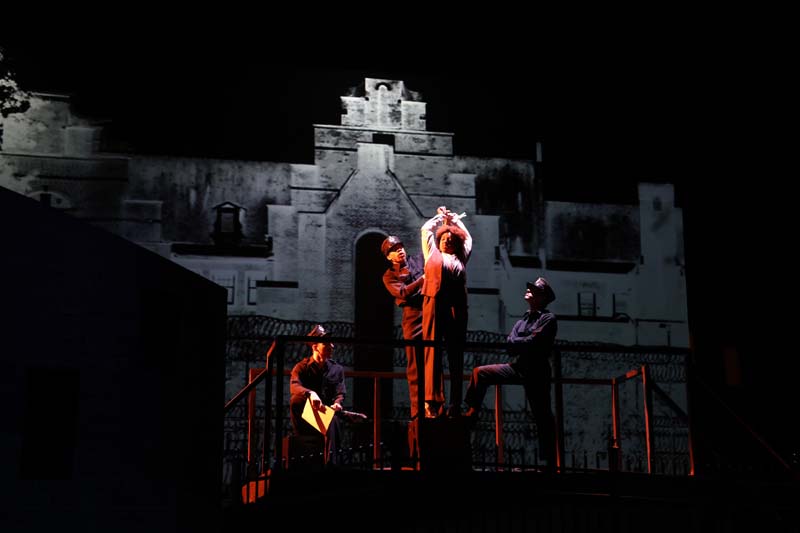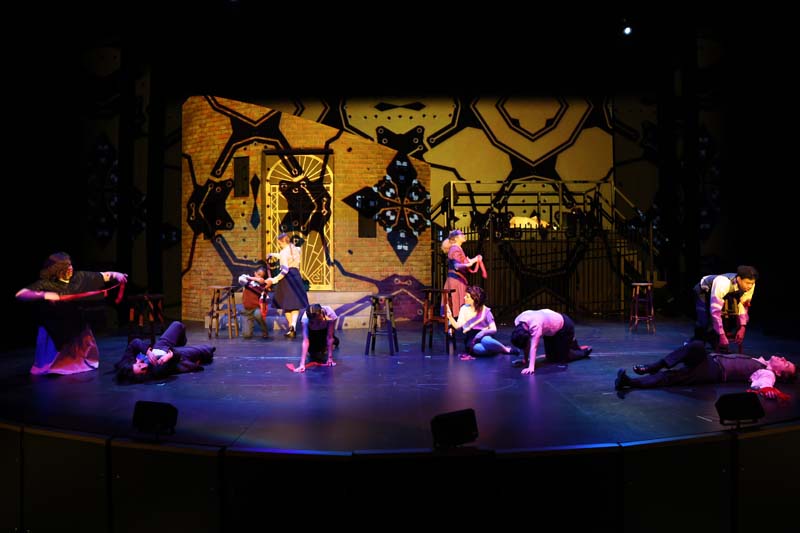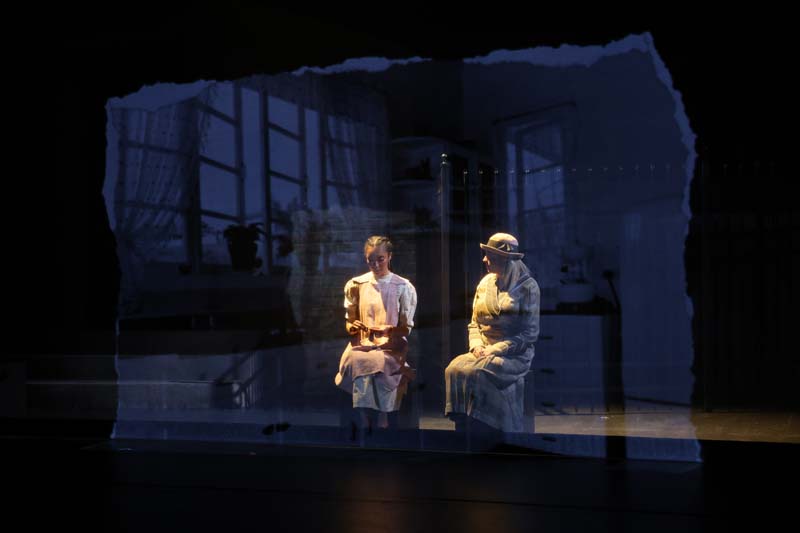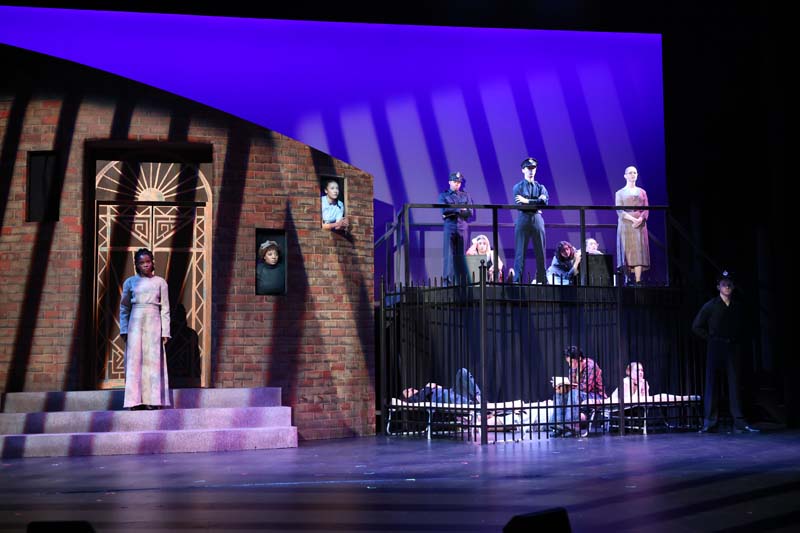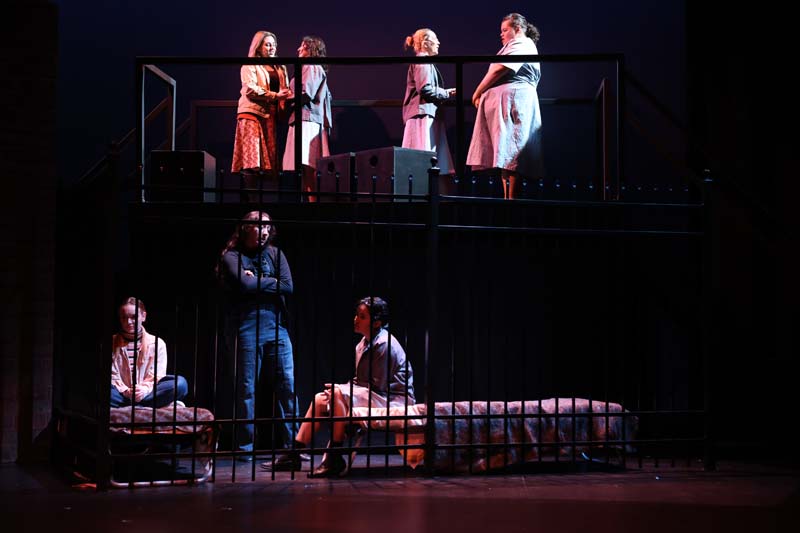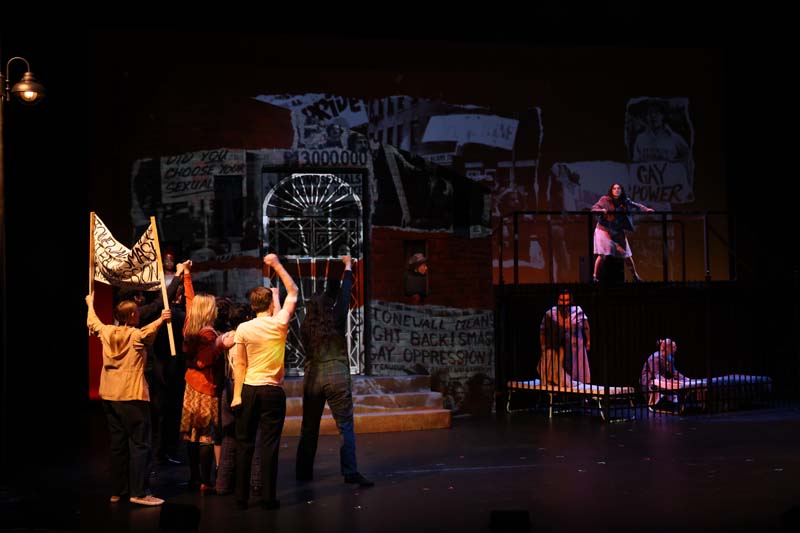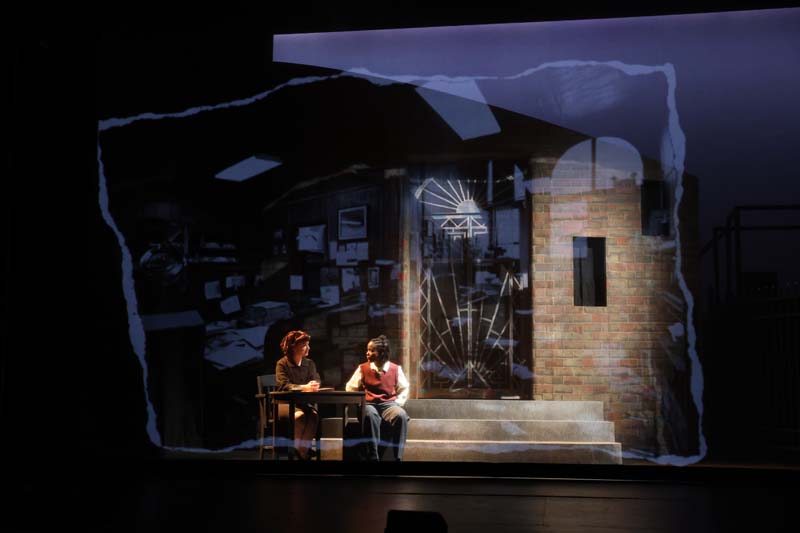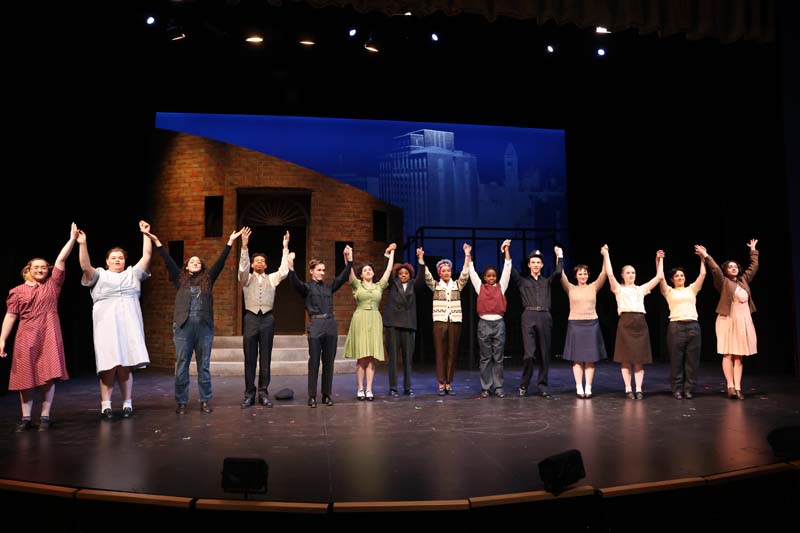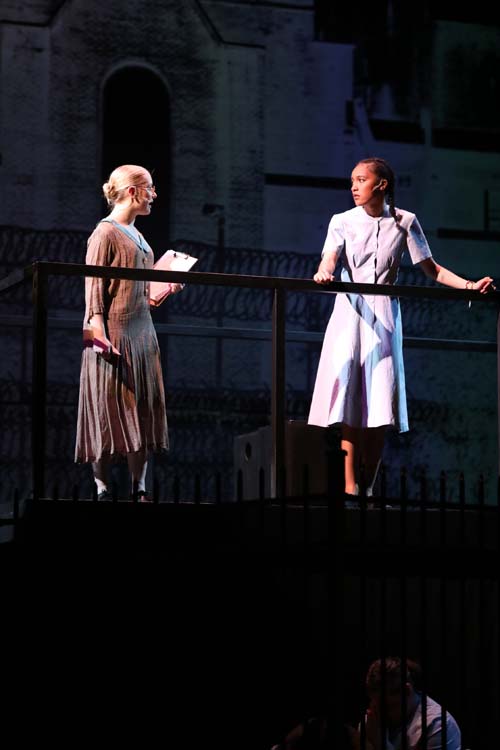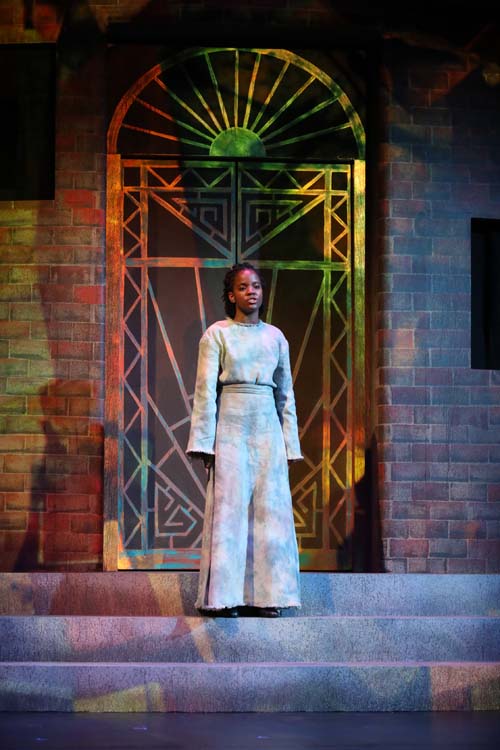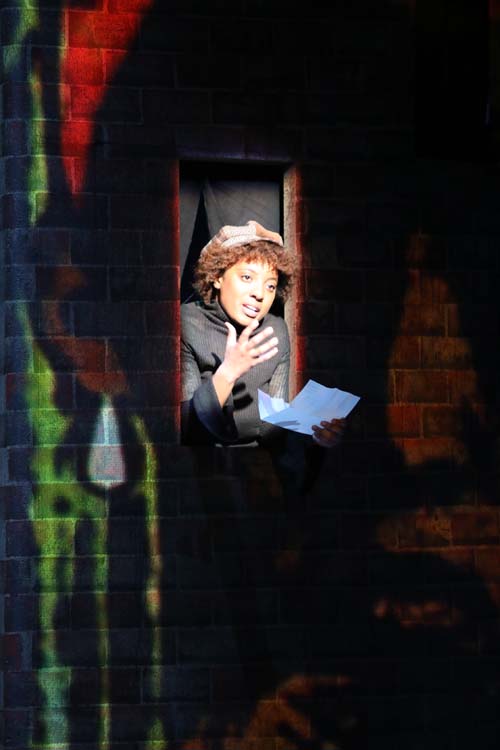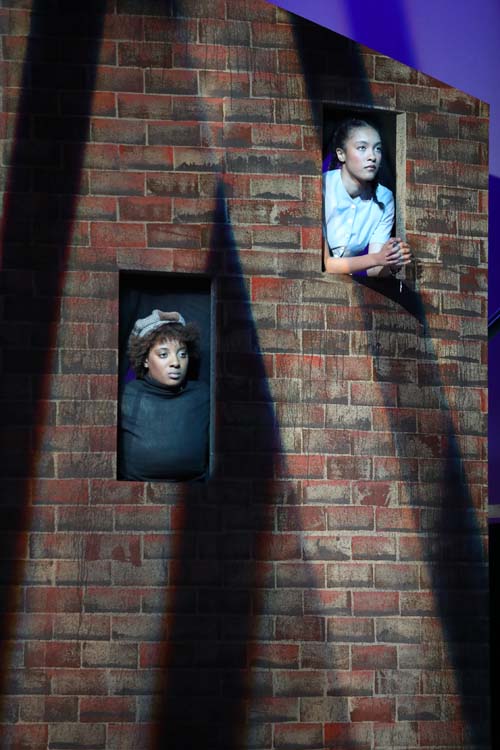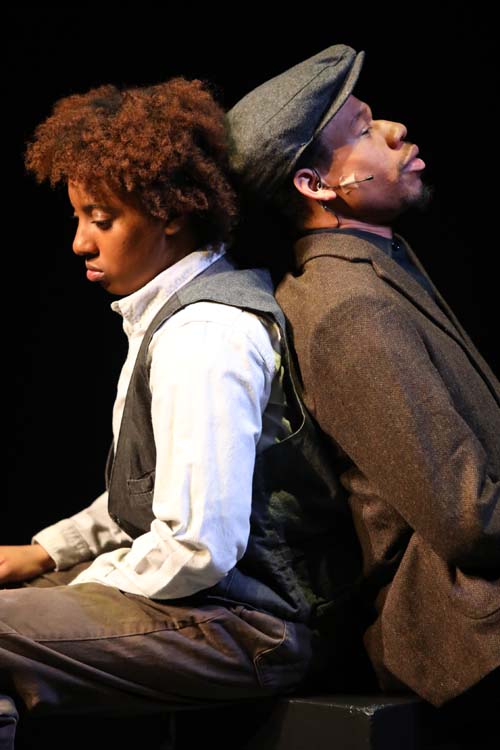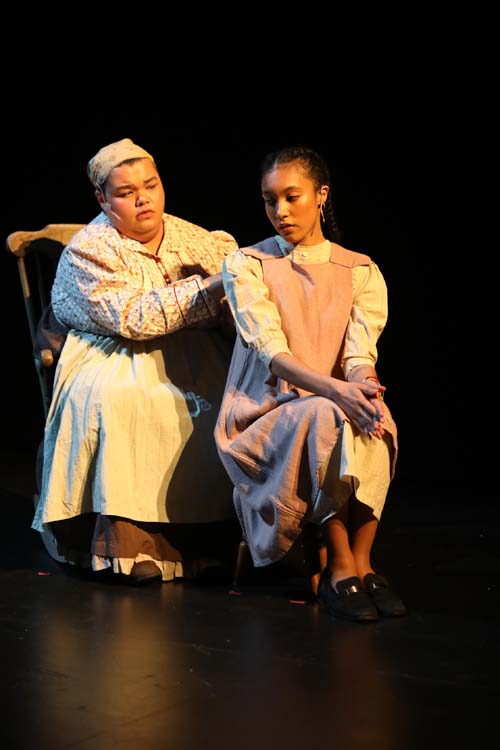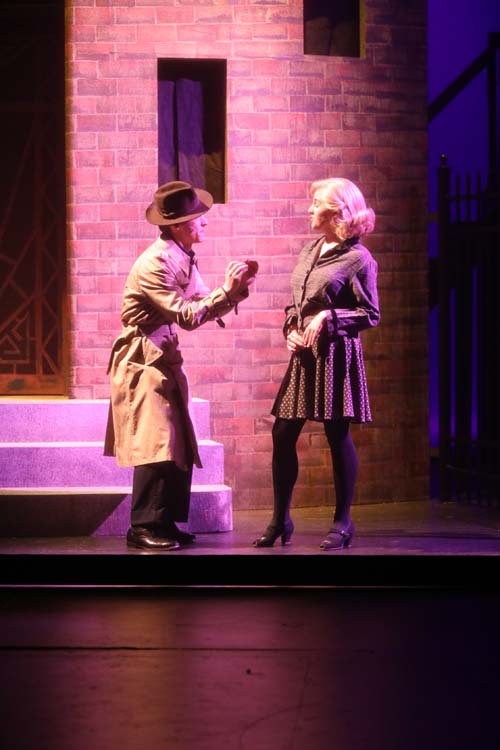- Apply
- Visit
- Request Info
- Give
'House of D' takes viewers behind the bars of infamous women's prison
Art exhibition culminates in theatrical production
Written by Darlene Orozco b. '28
Published on May 06, 2025
The Department of Communication, Film, and Theatre at Eastern Connecticut State University presented its final main stage production of the year with “The Prison That Made America: Women’s House of Detention (1932-1974).” Written and directed by theatre Professors Reginald Flood and Alycia Bright-Holland, the show ran from April 24-27 at the Fine Arts Instructional Center Proscenium Theater.
The play took viewers behind the walls of the historic Women's House of Detention in Greenwich Village, New York, a neighborhood where Bohemian rebellion and queer culture flourished.
The play follows "House of D" residents, some well-known, such as political activists Angela Davis, Afeni Shakur, and writer Andrea Dworkin. The unheard voices of criminalized people were also uplifted through “lesser-known characters such as Charlottle, Virginia, Louise B., and ‘Big Cliff’ Trundle,” said Bright-Holland.
Karynn Hardy ‘25 played the character “Big Cliff” Trundle. Trundle was first arrested for “masquerading in men’s clothing.” He spent years battling a heroin addiction and dealing with the trauma that came from incarceration.
“Playing a person who has been through the (carceral) system was not an easy feat,” Hardy said, noting they wore a bodysuit to physically embody the character. “It added a dynamic level to my acting process.”
Angela David and Mabel Hampton were brought to life by Xsyanni Jackson ‘25. “It's tough playing a person in the carceral system, especially since the characters we’re playing are real people,” they said. “I just want to pay proper attention and respect to their stories.”
Jackson highlighted the importance of telling the stories of people in the carceral system. “My biggest takeaway was learning how much these men and women had taken away from them inside and outside of the prisons so that we can live the way we live today,” Jackson said. “Today I can dress how I want, act how I want, and love who I want, but not without the sacrifices these people made.”
Like most of the cast, Almi Morales ‘28 played multiple characters in the play. “A challenge I had with this production was creating a background for each of my characters so that they each could be more grounded in the show,” they said. “With this, I had creative freedom, which really helped me understand where I wanted to go.” Morales said the play deepened their understanding of the carceral system’s impact.
Celeste Petrowsky ‘25 also played various characters, including Great Aunt Adelia and Louise B. “There were a lot of women thrown in the house of detention for just existing and being themselves,” she said.
Petrowsky noted the emotional challenge of separating herself from her characters for the sake of her mental health. She echoed Jackson’s call for broader representation. “Telling stories of the past can really inform the future,” she said. “What happened in the House of D was not that long ago in hindsight and that needs to be talked about more.”
Pre-show reception
The play was accompanied by a pre-show reception on April 24 in the Art Gallery, which featured a related exhibition titled "House of D: Voices out the Window, Stories on the Ground," co-curated by Bright-Holland and artist Lauren Sandler.
At the reception, various art pieces were displayed including photographs, sculptures, and oral histories, all centered around themes of incarceration, women’s history, and queer history. Some of the artists featured included Sana Musasama, Viola Borden, Alison Cornyn, and Sandler.
Sandler’s piece is a representation of the prison building, “variously referred to as Skyscraper Alcatraz, Shame of the City, and Hell-Hole,” according to Bright-Holland.
Sandler explained her relationship to the House of Detention. “I grew up in Greenwich Village one block south of where the prison stood,” she said. “I grew up with a lot of stories about that place, so I wanted to explore the prison’s impact on the community.”



